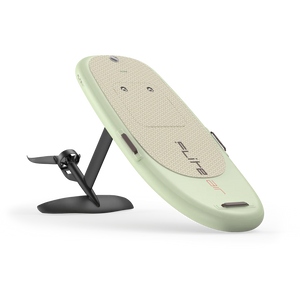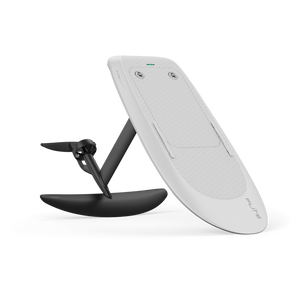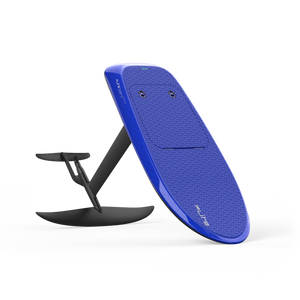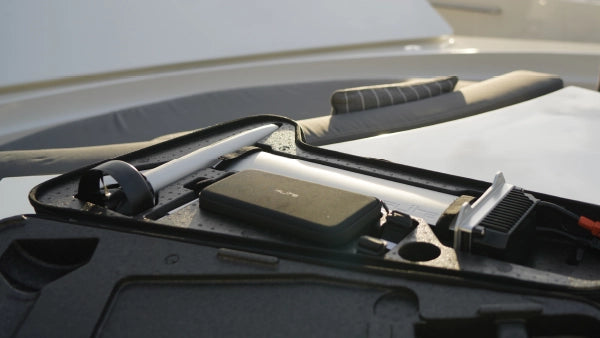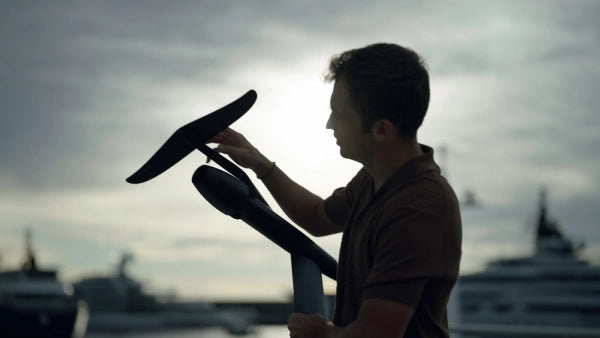Unveiling the Evolution: A Brief History of the eFoil
You’ve no doubt seen eFoil riders at your local beach or on your social feed. Most people outside the world of hydrofoiling are initially pretty mystified by what appears to be a hoverboard flying above water. And even if you’re already an avid hydrofoiler you’ve probably wondered where these electric powered hydrofoil boards came from and why they’re suddenly everywhere.
So let's take a look at the history of the eFoil. From its inception and the pioneering minds responsible, to the development and milestones that have shaped it into this year's most exciting board and watersport.
The birth of the eFoil, When was the eFoil invented?
We won’t bother documenting humankind’s obsession with flight, you already know that story. But it’s safe to say we’ll always be looking for new ways to experience the sensation of flying. Instead let’s start around the early 2010s, when hydrofoil enthusiasts of all types, kite surfers, wakeboarders, prone foilers and even academics began to experiment with the idea of adding electric propulsion to a small hydrofoil craft.

The inventors and innovators. Who invented the eFoil?
While not strictly an eFoil board, in 2009 Prof. Jakob Kuttenkeuler and Prof. Stefan Hallström, both from the Royal Institute of Technology, KTH, Stockholm published the Evolo project, their submission to a course in a Master’s program in Naval Architecture. Their aim was to create an environmentally sustainable electric powered watercraft that could carry one person at 15 knots; it had to be silent yet playful while generating no wake. The Evolo was a great demonstration of hydrodynamics and engineering, but it was a little too clunky to appeal to the likes of wakeboard, kitesurf and prone board foilers.
The 2010s saw dozens of hydrofoiling enthusiasts across the world dreaming of an eFoil and tinkering in their sheds. Like many great ideas, this one was expressed simultaneously and independently.
During this decade, Don Montague, a huge name in windsurfing and kitesurfing, led a team developing sustainable hydrofoiling craft. In 2016 they created a one person hydrofoil board with an underwater electric propeller, called the Jetfoiler. It looks nothing like the eFoils of today, but their experiment proved it could be done.
That same year, on the other side of the world at an Australian hydrofoil kitesurf race event, the wind was nowhere to be seen. David Trewern, a former kitesurfing GPS speed world record holder, looked out on a glassy smooth sea and thought ‘what if I didn’t have to wait for the wind’?
Brainstorming sessions and homemade prototypes slowly built momentum, moving him closer to his own unique vision. In 2018 David Trewern launched Fliteboard, an inspired design that placed the motor in line with the foil fuselage. In the same year, Lift, an existing foilboarding brand, brought out their own eFoil board by attaching an electric motor to the mast between the board and foil.

The evolution of the eFoil
Since 2018 the eFoil community has exploded, bringing converts from the world of surfing, kitesurfing, snowboarding, skating and wakeboarding as well as curious thrill seekers who’ve never stepped foot on a board.
Long gone are the days of homemade experimental machines that required technical expertise to ride and maintain. Leading the charge are a handful of brands producing high-quality boards with advanced electric propulsion systems, smart safety features, efficient battery technology, intuitive controls and a variety of interchangeable wings suited to specific conditions and riding styles. These advancements have made the sport accessible to a much broader range of watersports enthusiasts, with eFoils suited to families and beginners all the way up to big wave and freestyle riders. These pro riders, who come from all sorts of boardsports, are in an exciting experimental era, pushing the limits of the boards and themselves. We’re witnessing the development of a sport in real time.

The future of eFoiling
eFoiling will continue to grow as a sport as brands continue to develop the technology. However, just like the automotive industry, the biggest advancements will come from battery development. Batteries will continue to get lighter, cheaper and smaller while their capacity, range and recharge speed grows. This will only improve the eFoil riding experience.
As the growing industry’s technology and engineering improves we’ll see it applied to electric passenger craft similar in size to jetskis with the range to match. eFoiling is already much more sustainable and efficient as well as being far less noisy and invasive to other beach, river and lake goers. There are already small to medium electric hydrofoil passenger boats available for sale and trial programs using larger electric hydrofoil boats for public transport.
At its roots the sport of eFoiling is about exhilarating riding. It combines the feeling of flying with the beauty, freedom and creativity of traditional boardsports. The sport of eFoiling is here to stay, and it’s set to become bigger and better. Who knows, we might even see eFoiling at the Olympics one day.


